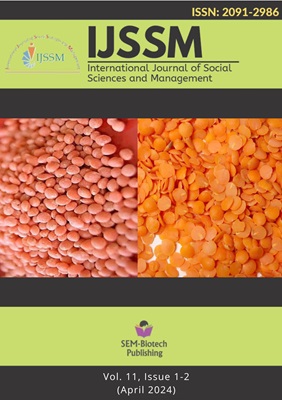Experimental Study on USBR Type Stilling Basin Design
DOI:
https://doi.org/10.3126/ijssm.v11i1-2.62867Keywords:
Weir shape, hydraulic jump, Energy Loss, Stilling BasinAbstract
Energy of water is to be dissipated forming hydraulic jump. The strength of jump depends on initial Froude number. The length of jump depends on the alternate depths. . This study is purposed to examine the effect of upstream face slope of weir in three models at vertical faced ogee shape weir, 60 degree slope ogee shape and 45 degree slope ogee shape weir in the case of jump formation at downstream side. The experiments were conducted in three discharge variations of magnitude 100 cm3/sec, 150cm3/sec and 200cm3/sec. The depths and velocity at upstream, at crest, at toe and at tail location were measured and analyzed. From the comparative study the water rise in upstream was more in vertical faced weir than in others. The variation in velocity, Froude number found increased with the increase in discharge in all cases. The hydraulic jump length and loss in energy were changed with the change in discharge. The most effective length of stilling basin was found in case of vertical faced weir on the basis of jump length whereas from the energy dissipation point of view the maximum energy was dissipated in 60 degree slope face weir but the length of jump was greater in this weir. The coefficient of discharge variations were observed for all models and found in the range of 1.5 to 1.8 which is very close to the textbook value that showed the robustness of the experiments conducted.
Int. J. Soc. Sc. Manage. Vol. 11, Issue-(1-2): 17-26.
Downloads
Downloads
Published
How to Cite
Issue
Section
License
Copyright (c) 2024 International Journal of Social Sciences and Management

This work is licensed under a Creative Commons Attribution-NonCommercial 4.0 International License.
This license enables reusers to distribute, remix, adapt, and build upon the material in any medium or format for noncommercial purposes only, and only so long as attribution is given to the creator.




